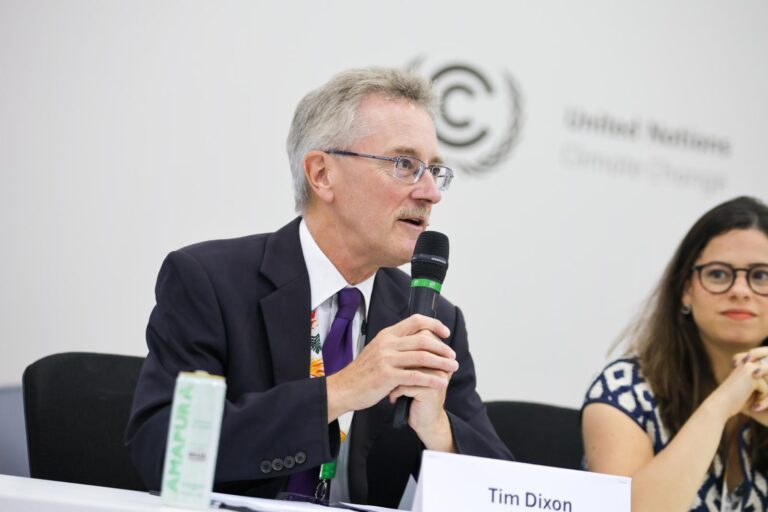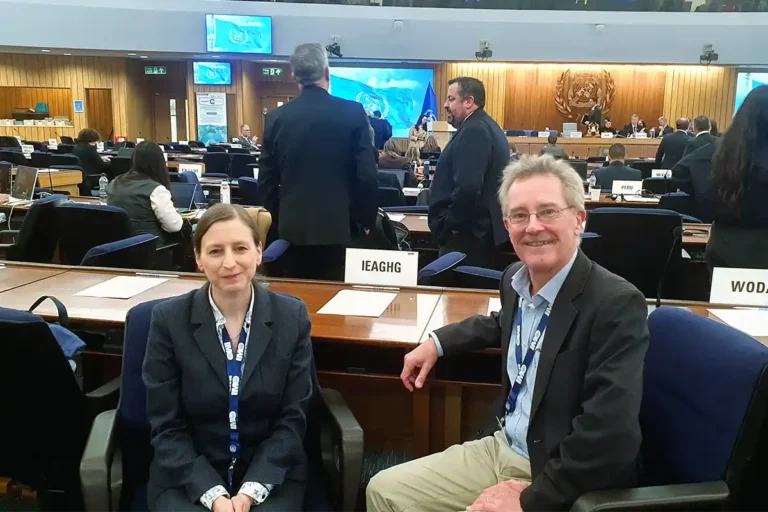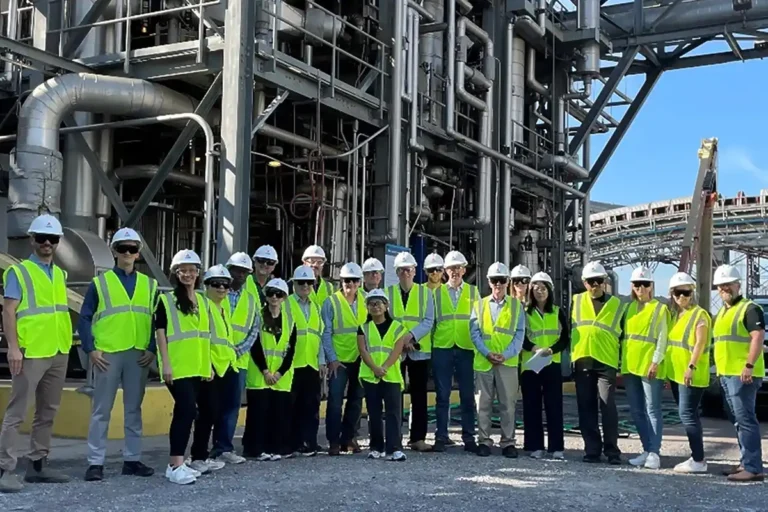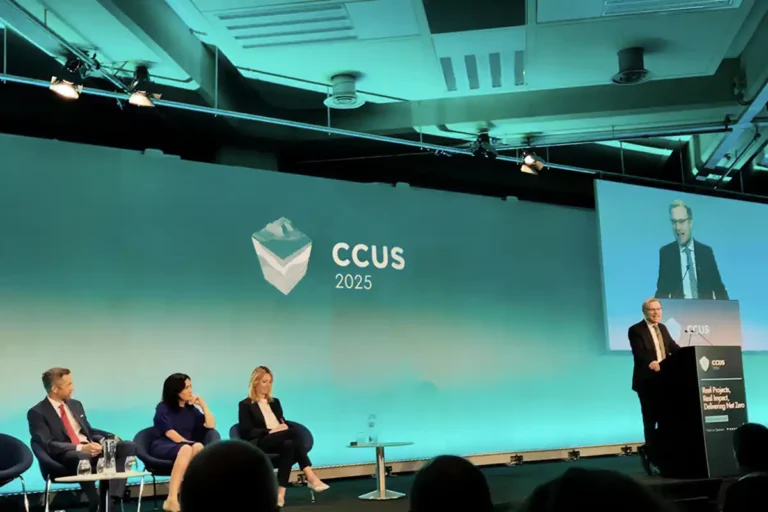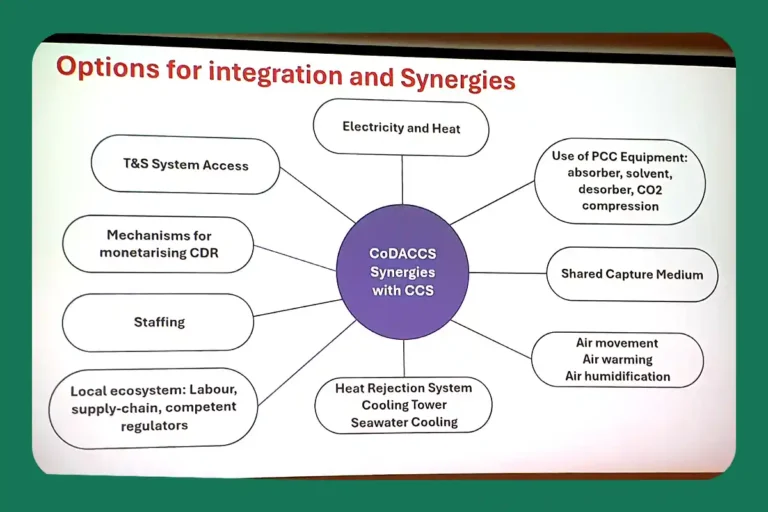
Key Financing Principles for CCUS – launch event by CEM CCUS Initiative
16 September 2020


The 11th Clean Energy Ministerial is being hosted by Saudi Arabia at the moment, all virtual events as you would expect. On the 15 September a Side-event was organised by the CEM CCUS Initiative to launch the ten Key Financing Principles for CCUS. These principles were developed by a CEM CCUS group made up of banks and finance sector organisations with the remit to explore the barriers to large-scale investment in CCUS, including how to establish a revenue stream from CCUS projects. The Key Financing Principles for CCUS comprise principles and recommendations for consideration by governments, industry and the financing sector to establish a business case for CCUS and kick-start the financing of CCUS projects globally. These recommendations build on the work that has been done by governments, industry and the financial sector to develop financing options for CCUS.
After openings by HRH Abdulaziz bin Salman Al Saud, Energy Minister of Saudi Arabia, and Dr Fatih Birol, Executive Director of the IEA (who referred to the strong messages on CCUS from ETP2020), the ten Key Financing Principles were presented by Anthony Yuen, Managing Director and Head of Energy Strategy, Citigroup. These are:
1. Governments, industry and the financial sector should communicate the importance of CCUS. According to the IPCC, meeting climate change mitigation targets will be significantly harder and more expensive without CCUS. CCUS is therefore fully aligned with sustainable, green, low-carbon taxonomies. The importance of CCUS needs to be clearly communicated by governments, industry and the financial sector through policy and strategic decisions and directly to their constituents, customers, shareholders, environmental organisations, and to the broader public.
2. Government policies should establish a revenue stream for CCUS to facilitate private sector investment. Governments should apply lessons learned from successful CCUS projects and policies globally as well as from analogous technology policy to establish a business case for CCUS projects and de-risk private sector investment. Renewable energy policies such as grants, feed-in-tariffs, tax incentives, mandates, etc., have successfully established revenue streams, driven investment, and reduced the costs of the targeted technologies. Features of these polices can be replicated and tailored to achieve parallel results with CCUS.
3. Government, industry and the financial sector should work together to facilitate CCUS investment and help mitigate the risks of CCUS deployment. No single stakeholder can provide the investment necessary and accept all risks associated with establishing a CCUS industry. CCUS projects in operation today are true public-private partnerships with investment shared and risks assumed by the appropriate risk owner. As the sector is being established, high levels of government support may be required however the private sector need to play their part. The role of the private sector will increase over time as the sector matures.
4. Governments, industry and the financial sector should work together to establish a pipeline of CCUS projects. Support mechanisms should shift focus from individual projects to the establishment of a CCUS industry. Government policies and incentives should be repeatable and support a portfolio of projects. Industry and the financial sector should identify prospective projects and determine the interventions and support required to bring them to operation. Pre-commercial investment is required to characterise and confirm viable storage locations globally.
5. The finance sector should ensure CCUS is part of their climate change strategies and is eligible for sustainable finance. More and more shareholders are demanding the financial sector invests sustainably, in line with environmental, social and governance (ESG) standards and goals. Given CCUS can achieve significant and verifiable CO2 emissions reductions, as demonstrated by numerous operational projects, financial institutions should include CCUS in their climate change strategies and ensure its eligibility in sustainable investment policies and mechanisms.
6. The finance sector should strive to accelerate the development of novel financing approaches to CCUS. The finance sector is actively looking for new financial mechanisms and business models for CCUS projects. These efforts, in partnership with governments and industry, should continue and expand to find ways of addressing the specific investment requirements and characteristics of CCUS projects.
7. Governments should consider CCUS as part of their Nationally Determined Contributions (NDC) under the Paris Agreement. CCUS is necessary to meet Paris Agreement targets and therefore governments should consider including it in their current and future NDCs or in related supporting strategies. Furthermore, collaboration and cooperation on CCUS deployment should be aided via mechanisms enacted under Article 6 of the agreement. Including CCUS under Article 6 will encourage novel CCUS financial and cost-sharing mechanisms that benefit both developed and developing countries, helping to meet their NDCs.
8. Governments should utilize existing development and climate institutions to advance CCUS in developing countries. Governments should encourage existing climate change and development institutions, such as multilateral development banks and climate change funds, to work with developing countries to identify and advance low-cost CCUS investment opportunities.
9. Governments should consider CCUS investment as a means of creating and preserving sustainable jobs and providing a low-carbon stimulus to the economy. CCUS investment benefits broad segments of the economy including power generation, cement, steel and chemical production and can provide regional low-carbon stimulus through investment in CCUS hubs and clusters. Jobs created and preserved through CCUS investment are for the long-term, forming part of sustainable growth trajectory and a decarbonized future.
10. Governments, industry and the financial sector should consider CCUS investment as a means of driving innovation and supporting broader industrial development. Investment in CCUS research, development and demonstration leads to spill over benefits across industry and the broader economy including, but not limited to catalysis, material science, process engineering and energy efficiency. Investment in CCUS performance improvement and cost reduction has already led to the deployment of innovative low-carbon technologies and processes in power generation as well as cement, steel and chemical production.
(all cited directly from the CEM CCUS source document below).
Over my years working in CCUS for IEAGHG and prior, with governments, in climate change conferences and in developing countries, I have witnessed the increasing need for all these principles. In most recent times for example, I have seen the need for donor countries to communicate the importance of CCUS to the climate finance institutions, so as to allow finance for CCUS to flow to developing countries (Principle #8 above). This same point was emphasised by Nataliya Kulichenko-Lotz of the World Bank in the subsequent panel discussion “we need strong messages for CCUS from donor countries”. Also, Principle #7 is very timely, for countries to consider CCUS in their Nationally Determined Contributions (NDCs) to the Paris Agreement, as these NDCs are due to have their 5-year update and submission to UNFCCC this year (2020) for assessment at COP-26.
The event was concluded with a ‘fireside chat’ by the chair, Dr Jarad Daniels, with HE Tina Bru, Minister of Petroleum and Energy for Norway. The Minister supported these ten key financing principles based on Norway’s own experiences.
So a high-level launch by two Ministers and the Executive Director of IEA for these Key Financing Principles for CCUS. More information and background on the ten Key Financing Principles can be found here.
Tim Dixon
Other articles you might be interested in
Get the latest CCS news and insights
Get essential news and updates from the CCS sector and the IEAGHG by email.
Can’t find what you are looking for?
Whatever you would like to know, our dedicated team of experts is here to help you. Just drop us an email and we will get back to you as soon as we can.
Contact Us NowOther articles you might be interested in
Get the latest CCS news and insights
Get essential news and updates from the CCS sector and the IEAGHG by email.
Can't find what you are looking for?
Whatever you would like to know, our dedicated team of experts is here to help you. Just drop us an email and we will get back to you as soon as we can.
Contact Us Now


